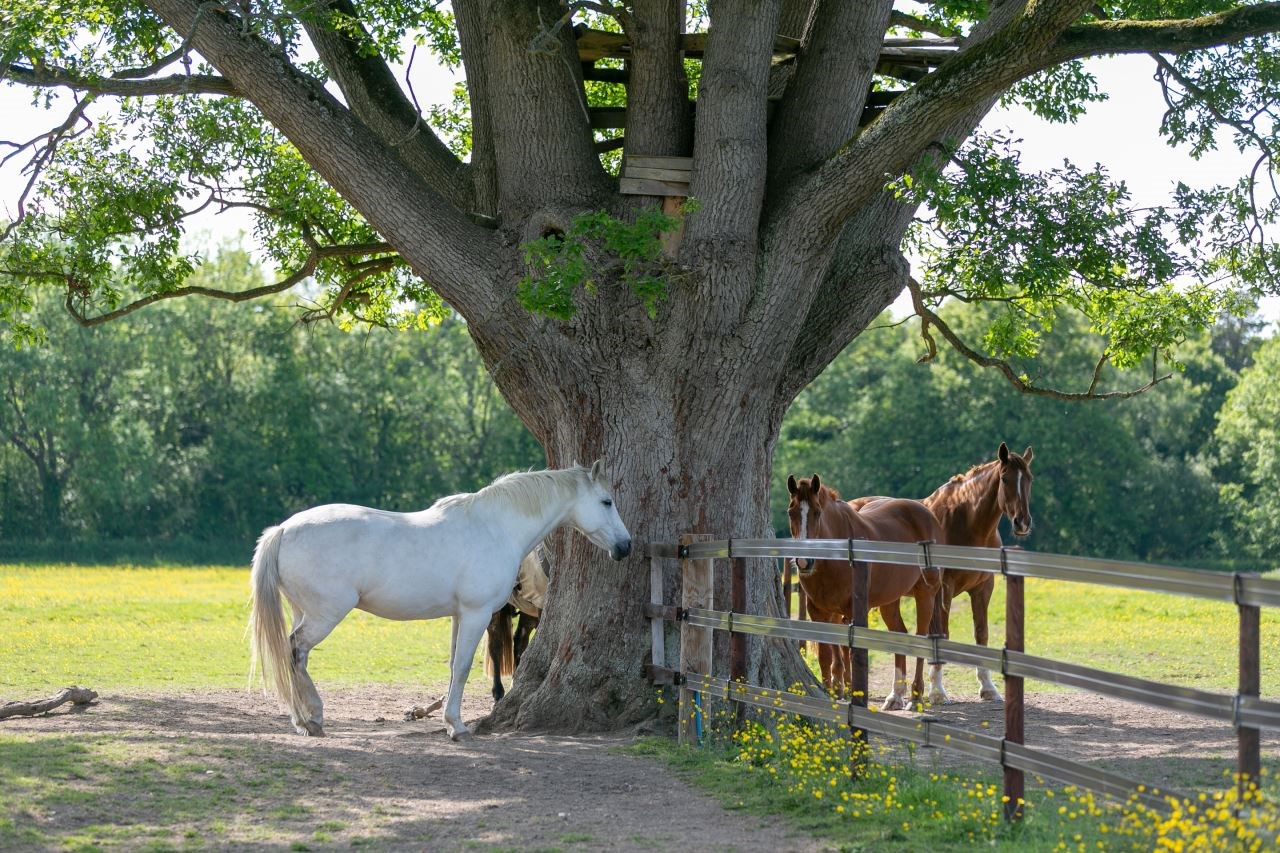Overheating and Hot Weather Care
The summer heat can be really dangerous to horses especially when it is made worse by high humidity. Horses can become dehydrated, lethargic and generally reluctant to work. Severe heat stress can cause colic, diarrhoea or collapse, so it is important to keep your horse cool.
Young, old and ill horses are more vulnerable and must be monitored carefully. Always think about the causes of overheating which include the obvious, such as very hot weather, but there are also other causes such as:-
- Excessive exercise
- Prolonged exposure to direct sunlight or turn out without shade
- Poor ventilation in stabling
- Transporting over long distances
- Obesity
- Inappropriate rugs
How to prevent overheating
- Choose the coolest times of day for turnout. Provide shade - trees are best as one side will always be out of the sun, whereas most shelters are in full sun some of the time.
- Slow down the work in warm weather, try to reduce the amount of work and work in coolest times of the day.
- Provide fresh, cool water and lots of it. Most horses drink more in the warm weather but others will need a salt lick or extra salt to encourage them to do so.
- Provide salt / mineral licks in field / stables or consider adding electrolytes in feed.
- If you are bringing horses in to avoid the heat, ensure there is adequate ventilation. If it is safe to do so it can help to use fans to provide a breeze.
- Clip hairy horses such as those with Cushing's disease.
- Avoid sunburn - horses, especially those with pink 'fleshmarks' (ie pink noses), can suffer from sunburn but the sun can also effect white socks, blazes and hairless patches such as scarring. Fly masks and sheets can help, as well as generous application of sunblock. Staying out of the sun is best. If a horse has excessive sunburn it can indicate an underlying liver disease. If you are unsure please call us and we can check this out with a simple blood test.
Signs to watch out for
- Profuse sweating
- Increased temperature, pulse and respiratory rates
- Lethargy and dullness
- A reluctance to work
- Loss of appetite
- Staggering and weakness
- Muscle tremors
- Collapse
Treatment
- Move your horse into shade immediately
- Cold hosing of the whole body, focusing on the big muscle masses in the hindquarters. It is important to repeatedly remove the heated water from the horse with a sweat scraper. Do not lay wet towels over the horse as that just traps the heat.
- Gentle walking or stand in a breeze / under a fan to help cooling
- Offer small amounts of cold water to drink (half a bucket, maximum 10 litres) every 30 minutes
Please call us if you are at all worried or have any questions.
Keeping flies at bay
With the warm weather comes the joy of flies. Here are the worst offenders and some tips on how to make your horses happier in the summer:
Horse flies emerge in June / July and are most active on warm, calm days especially around woodland. Favourite feeding sites include the horse's underside, legs, neck and withers. These flies will rarely venture into dark areas so stabling can offer some protection.
In general, homemade repellents are of little benefit against horse flies as they are persistent creatures who will return even if you swat them away. We recommend insecticides known as synthetic pyrethroids - especially permethrin or cypermethrin (as found in Coopers Fly Repellent, Switch and Deosect) which offer the best solution and can be purchased from us or sourced from tack shops or on line as they are not a prescription medicine. With any fly repellent, always spot test on a small are first to check for sensitivity as these chemicals can upset some sensitive skinned animals.
Black flies are small in size (approximately 2mm-5mm) and breed in rapidly moving water. High-risk times are dawn and dusk during spring and early summer - stabling may well be a helpful solution to reduce exposure. These flies commonly feed around the face (particularly inside the ears), the neck and underside of the horse where they can trigger an allergic skin reaction to their saliva and distract the horse
Synthetic pyrethroid fly sprays can act as a deterrent although physical barriers such as fly masks with ears are the best prevention.
Midges (Culicoides) are 1mm-3mm long and hover in swarms at dawn and dusk. Eggs are laid in standing water so try to avoid stagnant areas. Sweet itch is when horses are allergic to these bites and have a hypersensitive reaction to them.
Preventative measures include:
- fly barriers such as anti-midge / fly turnout rugs and neck covers, plus fly masks,
- applying a long-lasting fly spray (such as Deosect or Coopers Fly Repellent) regularly is relatively effective
- using fly traps or fly tapes in stable areas (making sure it is in a place which is out of reach from your horse)
- eliminate puddles and ponds of still water where midges might breed, or move your horse to paddocks away from these areas
- practice good hygiene around the yard to reduce the number of flies
- keep horses in when the flies are bad
- use a fan in the stable to blow the flies away (again ensuring that it is out of reach from your horse)
